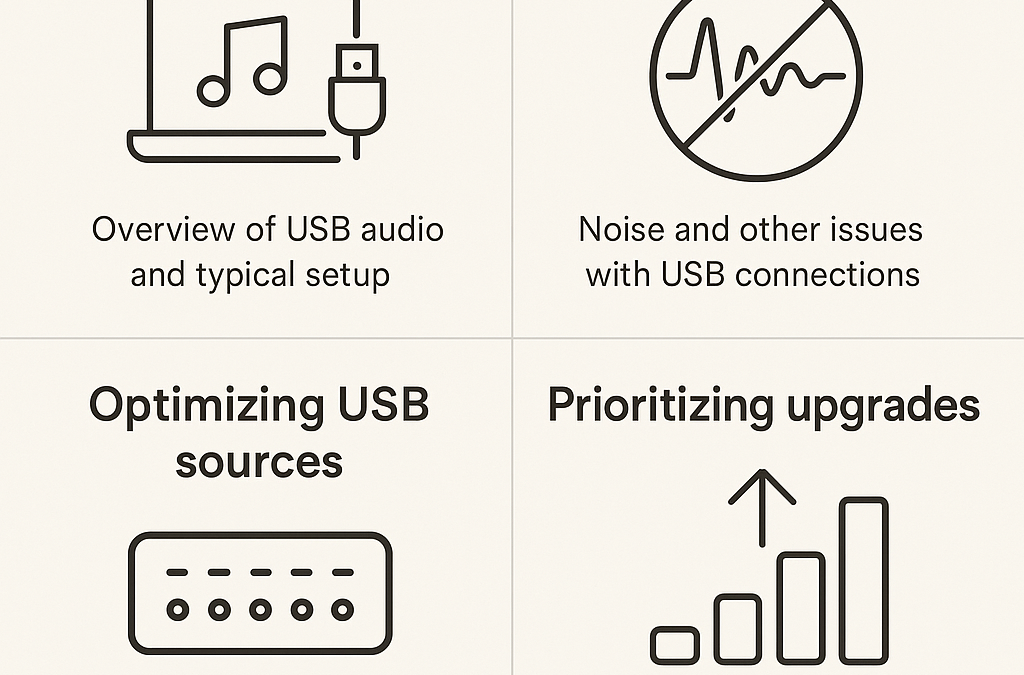Authors: Jim Kotsakidis, Iliyan Selenski
Introduction
In today’s streaming-first audio world, most hi-fi enthusiasts focus on DACs, amps, and speakers — but ignore the very path their music travels. Surprisingly, what happens before your DAC even receives a signal can make or break your soundstage, timing, and tonal balance.
Terms like “jitter,” “clock phase noise,” and “asynchronous USB” are often thrown around, but rarely explained clearly. In this 3-part series, we’re demystifying the hidden but critical factors affecting your streamed audio performance — from Ethernet switches and fiber isolation to DDCs and I²S signal integrity.
Whether you’re running an advanced system like the Denafrips Arcas with external clocking or just beginning your network audio journey, you’ll learn how to extract the most from your gear by optimizing the digital chain before your music hits the DAC.
The Invisible Problem in Digital Audio
When you stream music to your hi-fi system, you’re likely thinking about bitrates, file formats, or DAC chip specs — but what if the biggest factor affecting your sound quality isn’t in the music file at all? One of the most overlooked and misunderstood issues in digital audio is jitter: tiny timing errors that can smear transients, compress dynamics, and strip your music of its realism and space.
Even in high-end systems, jitter often flies under the radar, hiding behind terms like “cold,” “digital,” or “fatiguing” sound. This article breaks down what jitter is, why it matters, and how it can creep into your system — even in a fully asynchronous, high-resolution setup.
⏱️ What Is Jitter?
Jitter is a form of timing inaccuracy. In digital audio, timing is everything — your DAC relies on receiving digital samples at precise intervals to accurately reconstruct an analog waveform. Jitter refers to variations in those timing intervals.
There are a few important distinctions:
- Network jitter affects when data packets arrive (usually in milliseconds)
- Clock jitter (or phase jitter) affects when digital bits are read and converted (measured in picoseconds or nanoseconds)
- While TCP/IP ensures all your data arrives intact (eventually), the timing of how that data is handled in the DAC or streamer can still impact sound quality — especially when dealing with high-resolution audio and sensitive analog outputs.
🔍 Types of Jitter in Audio Systems
- Network Jitter
- Caused by variation in packet delivery times
- Usually buffered by your streamer, but poorly designed hardware can still leak noise
- Measured in milliseconds
- More of a concern for power supply noise and ground plane pollution than timing errors directly
- Phase Jitter (Clock Jitter)
- Occurs inside DACs, streamers, and USB interfaces
- Affects the precise timing of audio bitstream conversion
- Measured in picoseconds
Can cause:
- Blurred imaging
- Harsh treble
- Loss of microdynamics
- Data-Dependent Jitter
- Variability caused by the signal itself (e.g., certain bit patterns)
- Poor isolation or digital circuits can exacerbate this effect
- Power Supply-Induced Jitter
Noisy switching supplies or shared ground planes can modulate clocks or USB receivers, causing phase instability.
🧠 Why Jitter Matters (Even in Digital)
A common misconception is that “digital is perfect” — either the bits arrive or they don’t. While this is true for data integrity, audio playback is a real-time process. A DAC can’t simply wait and re-request missing or late samples — it has to convert data on time, every time.
If the timing is inconsistent, the analog waveform reconstructed from the digital stream will be subtly distorted. This doesn’t sound like “glitches” — it sounds like a lack of realism:
- Vocals feel less natural
- Imaging loses precision
- Complex passages sound flat or collapsed
🛠️ The DAC’s Role in Managing Jitter
Modern DACs — especially asynchronous USB DACs — often use internal FIFO buffers and reclocking techniques to reduce jitter. But:
- Clock quality still matters: a DAC is only as accurate as its internal or external clock
- USB receivers can still introduce timing noise, especially if poorly implemented
- Noise from upstream sources (like routers, switches, or USB power) can couple into the clock circuitry and degrade performance
🖼️ A Typical Streaming Setup (and Where Jitter Enters)
Example system:
Router → Wi-Fi → Streamer (Streamer) → USB → DAC → Pre → Amp → Speakers
Jitter-related weak spots:
- Wi-Fi and Router: high RF and switching noise, poor grounding
- USB output: electrically noisy, prone to ground loops
- Streamer: quality of USB output stage and internal clocks
- DAC: depends heavily on jitter rejection design and power supply quality
What to expect in part 2
In the next article, we’ll explore how to fix these weak links. We’ll look at:
- Audiophile switches (like the LHY SW-6)
- Power supply upgrades
- Optical (FMC) isolation (LHY)
- Galvanic separation
- USB vs I²S signal paths
- And how to prioritize upgrades for the biggest sonic improvement
Contact Us
For Sales Enquiries:
Email: [email protected]
Phone: Call Stav on 0400-556-558
Web: dacmanaudio.com.au
References
- Audio Precision. (n.d.). Measuring Jitter in Digital Audio Systems.
Retrieved from https://www.ap.com/technical-library/measuring-jitter-in-digital-audio-systems/
- Texas Instruments. (2013). Understanding and Reducing Phase Noise and Jitter.
Retrieved from https://www.ti.com/lit/an/snaa038b/snaa038b.pdf
- Julian Dunn. (1998). Jitter: Specification and Assessment in Digital Audio Equipment. Prism Sound.
Retrieved from https://www.prismsound.com/downloads/misc/jitter_specs.pdf
- Xilinx Inc. (2012). Jitter Basics – A Guide to Understanding Jitter in Clock Systems.
Retrieved from https://www.xilinx.com/support/documentation/white_papers/wp350.pdf
- Atkinson, J. (Various Years). Jitter Measurements in DAC Reviews. Stereophile.
Retrieved via https://www.stereophile.com/
- McGowan, P. (n.d.). What Is Jitter? PS Audio Blog.
Retrieved from https://www.psaudio.com/blogs/pauls-posts/what-is-jitter
- Archimago. (Various Years). Jitter and DAC Performance Tests. Archimago’s Musings.
Retrieved from https://archimago.blogspot.com/search?q=jitter
- Beekhuyzen, H. (2022). Jitter in Audio Explained. YouTube Channel: The Hans Beekhuyzen Project.
Retrieved from https://www.youtube.com/watch?v=zTn2L_uKq-I
- Audio Engineering Society (AES). (Various Years). Jitter in Digital Audio: A Tutorial. AES E-Library.
Access via https://www.aes.org/e-lib/

